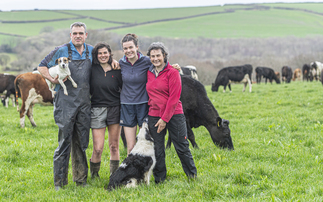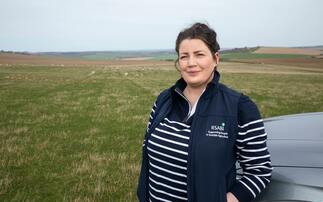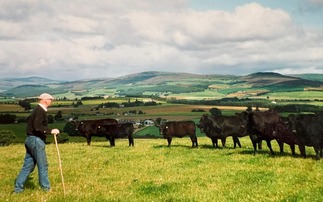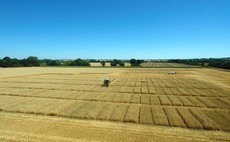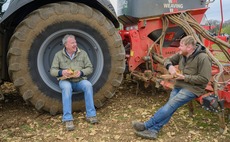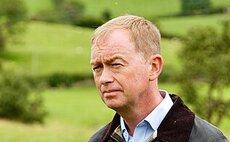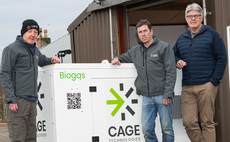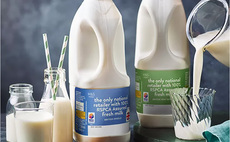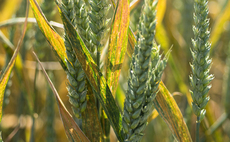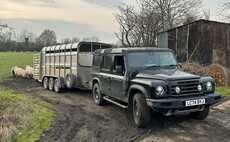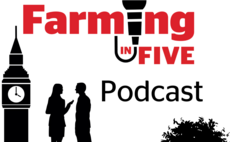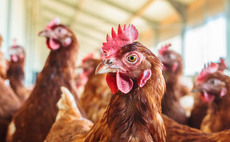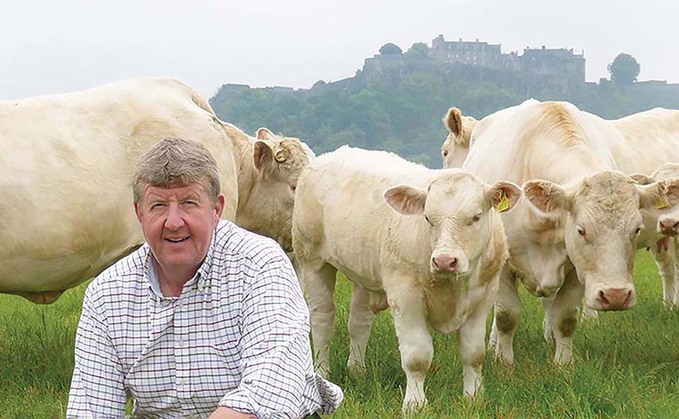
Community is often at the heart of farming life, but for few aspects is this as important as it is for the huge network of agricultural shows.
And for farmer and business owner Andrew Hornall, like many others, his passion for attending, exhibiting and latterly helping with the organisation of these began at a young age.
He is the third generation of his family to farm at Falleninch Farm, near Stirling, where he grew up breeding, showing and working pedigree Charolais cattle after his grandfather established the Falleninch herd in the 1970s.
While his day-to-day work nowadays is mainly that associated with the running of the well-established family butchery business, what is now the 15-cow Falleninch herd is still a firm passion of Andrews.
Exhibiting
Exhibiting cattle and selling bulls at Stirling Bull Sales has been a fixture in the family calendar for several decades now, with annual trips made to the Royal Highland and other local shows at every opportunity to compete, socialise and catch up with friends and colleagues.
Thinking back to his early memories of Ingliston showcase, he says: From a very young age I can remember having complete freedom to run around the entire show. We had the caravans there with the family and it was a fantastic experience; just being there, looking after the cattle and showing them.
Andrew also recalls fondly how his father used to write to his school as a boy informing them, he would be taking his son out for the Royal Highland Show week where he said he would learn more in a week than he would in a term at school.
The event and society have grown hugely since then, Andrew says. And like so many other farming enterprises, the Royal Highland Show has had to diversify to keep pace with changing consumer demands and the rising costs associated with putting on such an event. It is a different show now to what it was back then, but changes have been necessary.
More recently Andrew has got involved with the organisational element of the charity, joining the Royal Highland and Agricultural Society of Scotland (RHASS) board some nine years ago where he threw himself into the role of convener of fundraising and partnerships, which he still holds, and latterly as chair of a membership working group and a member of the Executive Committee.
Structure
However, its the societys structure, a group of 48 50+ directors from eight regions in Scotland, which Andrew says has ensured each section of the show has continued to be run by those best placed to do so.
It may sound a bit overkill, he says. But it works as it allows each of the directors responsibility for their own section which they typically know inside out and will have the contacts to recruit the relevant volunteers who make the event run smoothly on the day.
Andrew also quashes the idea that Covid cancelations may have led to a drop off in the volunteers and general community stalwarts who are integral to keeping so many shows and events running smoothly.
We are hearing the opposite, he says. People are desperate to get back to the shows and events, meet up with old friends and enjoy the camaraderie and some time away from the everyday routine.
Agricultural shows have a pivotal role in rural communities. They are a catalyst to being able to enjoy peoples company again and for rural communities to really open back up to a wider audience to showcase all the best of food, farming and our rural way of life. I also truly believe ag shows have a positive impact on farmers and rural dwellers mental well-being as a vehicle for communication, sharing stories and troubles.
When you join any pedigree breed, youre actually joining a club the Highland Show is an assembly of all these clubs at which individuals come together for the same purpose of competition, friendly rivalry and showing their wares off.
Equally though, he says, the show is prepared if some kind of Covid related restrictions need to stay in place but he is confident these can be worked around and have a near normal show as possible.
We are moving to being a book in advance ticketed event for the first time. but, he says.
But looking back to recent years, this is no bad thing and a good way for us to be able to control visitor numbers which had become very heavy on certain days of the show this is a good opportunity for us to move in this direction and make it a better experience for visitors.
Diversity
Andrew also points out the increasing diversity of business backgrounds among show directors and a shift away from all out agriculture.
Increasingly, people are coming on board who are involved in businesses where agriculture is part of the core, but not the whole story, he says. It might sit alongside diversification from tourism, food, land developments and more which brings a different perspective to organisational decisions.
Bringing in interest from younger generations is also important to the shows future, he says, although stresses the that being involved is time consuming between attending various meetings and discussions.
The pandemic though has brought some flexibility to the way organisational meetings are organised, with the smaller meetings set to continue virtually as they had done when travel restrictions were in place, while others will take place face-to-face.
Andrew says: We [the RHASS] also have regular discussions with SAYFC to facilitate a good pathway for young people coming on board, while local shows are a great place for youngsters coming into the organisational structure.
No better example of this is that John Owen from our Stirling Area who has been past national Chairman of the SAYFC is now on the Board as an area director and will be heading up the Main Ring as Chief Steward for the first time this year.
Back at home and Andrew and his family are eager, like many regular exhibitors, to get back into the ring. And with his daughter, Jessica , looking set to continue the tradition for years to come, there is sure to be many more years of success for Falleninch Charolais still to come.













